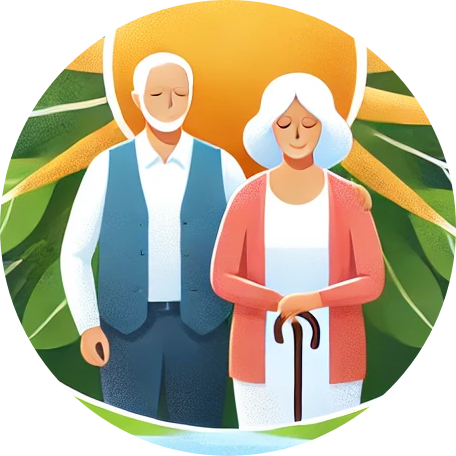
Discovering the Science of Aging and Blood Pressure
As we journey through life, our bodies undergo remarkable but sometimes concerning transitions, especially when it comes to our health. High blood pressure, or hypertension, often creeps in without warning, particularly after the age of 60. This growing issue can be debilitating, and recent insights from Dr. Shigiyaki Hinohara, Japan’s oldest doctor, shine new light on why this occurs and how to manage it effectively through simple, natural methods.
In 'Japanese Oldest Doctor: Why Most Seniors Can’t Control Their Blood Pressure,' we explore significant insights into managing blood pressure for seniors, prompting a deeper investigation into practical habits for healthy aging.
The Hidden Mechanisms Behind Rising Blood Pressure
For many seniors, the experience of elevated blood pressure isn't merely a symptom of aging; it can be likened to a malfunctioning thermostat. Aging causes blood vessels to lose their flexibility, creating a bottleneck effect that requires the heart to exert more effort to pump blood. This is compounded by changes in the body’s internal pressure-regulating mechanisms, most notably the renin-angiotensin-aldosterone system (RAS). When this system misfires, it perpetuates high blood pressure, resembling a misguided thermostat that always thinks the body is under-cooling.
Understanding Pressure Management Beyond Numbers
One of the most misleading trends in hypertension treatment is the push to reduce blood pressure to figures below 130/80. This mantra, while well-intentioned, can lead to unintended consequences for seniors. Research, including the significant Jedo study, suggests that overly aggressive treatment may increase the risk of falls, dizziness, and fatigue rather than prolonging life. Instead, the focus should be on maintaining functionality—ensuring that the body feels steady and robust rather than obsessively chasing a numerical target.
Embracing Natural Remedies: Garlic and Gut Health
What if a simple kitchen staple could help manage your blood pressure? Enter garlic. Beyond its culinary appeal, garlic has been shown to possess properties that help reduce inflammation and relax the blood vessels. Combined with a gut-friendly diet enriched with fermented foods like miso and natto, seniors can nurture their internal garden of beneficial bacteria. This is essential for achieving a balance that supports not just blood pressure, but overall health—an aspect often overlooked in conventional treatment plans.
The Importance of Movement and Routine
The wisdom of Dr. Hinohara transcended age and traditional views of health. He believed in gentle, consistent movement, not merely as a form of exercise but as an integral part of life that encourages vitality. Regular walks, simple stretches, and mindful breathing can reactivate the body’s rhythm, facilitating a more harmonious state, thereby indirectly impacting blood pressure positively. Dr. Hinohara’s life reflects the idea that health is a journey, where every small action contributes to longevity and wellbeing.
Creating Healthy Nighttime Routines
Your blood pressure can continue to fluctuate even at night, an issue often ignored. This phenomenon, known as non-dipping hypertension, can prevent adequate rest and recovery. A consistent nighttime routine that includes turning off bright screens, reducing light exposure, and allowing for calm reflective moments can help regulate fluctuations. Melatonin, often referred to as the body’s internal dimmer switch, can also be optimized through rhythms and routines, leading to better sleep and improved heart health.
Concluding Insights: The Rhythm of Aging
Aging, with all its intricacies, need not be seen as a decline but rather as a transition into a new rhythm of life. Dr. Hinohara’s teachings emphasize balance over control—encouraging seniors to interact gently with their bodies rather than viewing them merely as machines. Impressionable lessons can be drawn from his practices: start your day with light walking, embrace the richness of your diet with natural remedies, and tune into your body’s needs as you reflect upon your health.
As we consider these insights, it’s crucial to recognize that these habits can foster longevity and emotional wellbeing. Initiating a dialogue with healthcare providers about these approaches can lead to a holistic understanding of health in later life.
In a world rich with information, the practices Dr. Hinohara lived by remind us that sometimes the simplest solutions lead to the most profound improvements. Start today by integrating these gentle habits into your daily life. For more advice and information about healthy aging, subscribe for ongoing tips on how to thrive in every stage of life.
 Add Element
Add Element  Add Row
Add Row 



Write A Comment